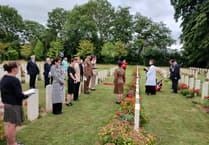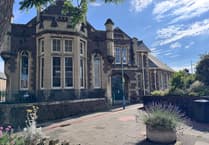OVER two-thirds of bullying incidents between youngsters in Blaenau Gwent have a racial element to them a report has revealed.
At a meeting of Blaenau Gwent County Borough Council’s Children, Young People and Families scrutiny committee on Tuesday, July 1 councillors asked if there was a “specific policy to deal with racist incidents” if or when they happen in their schools.
This was during a session that looked at the safeguarding performance of education department during the last year.
Data provided in the report, which attempts to explain the motivation behind of peer-on-peer bullying incidents in schools on “protected characteristics” as defined in the UK under the Equality Act (2010), showed that 61 of 90 incidents had a racist element.
Committee chairman, Cllr Wayne Hodgins (Independent) asked if it was down to schools to introduce “their own individual policy” on bullying or if the education department had a “blanket cover” that all schools followed.
Julie Sambrook said that a member briefing had been given to councillors a couple of months ago on the draft anti-racism action plan produced by the education department.
Ms Sambrook said: “That has been the result of working in partnership with organisations which provide racism support to schools.
“We facilitated an all-headteacher anti-racism awareness day in March.”
She added that following the member briefing session councillors had not made any comments on the plan.
Ms Sambrook said: “The plan in draft has now gone to schools and we’re now looking to engage with the local community before the action plan is finalised.”
“We have an action plan we have shared with everyone, and schools are able to either use that as a model plan for themselves.
She explained this could be just a protocol within a school’s own equalities plan which instructed staff what to do if faced with an issue that could be down to racism.
Cllr Derrick Bevan (Labour) ask: “Are we having racism problems in certain areas?”
Ms Sambrook said: “I think the issue is that it has not been recognised as a problem – we know there’s under reporting.”
She explained that training is being rolled out by the council so that staff recognise all facets of racism and how it differs from other types of bullying.
Ms Sambrook said: “Schools will say ‘we don’t have a problem with racism’ and then I will have a community cohesion team ringing me asking if I can provide support to a family as there’s been incidents of racism.”
She believed that getting schools to recognise what is and isn’t a racist incident is key to eradicating the problem
The report was agreed by councillors.
Peer on Peer motivation for bullying, number of incidents
- Racism – 61
- Homophobic – two
- Sexual – six
- Transphobic – seven
- Sexism – one
- Special educational needs (SEN) – one
- Others – 12.
Total – 90.
The Anti-Bullying Alliance and its members define bullying as ‘the repetitive, intentional hurting of one person or group by another person or group, where the relationship involves an imbalance of power which can be physical, verbal or psychological. It can happen face-to-face or online.

.jpg?width=209&height=140&crop=209:145,smart&quality=75)

Comments
This article has no comments yet. Be the first to leave a comment.